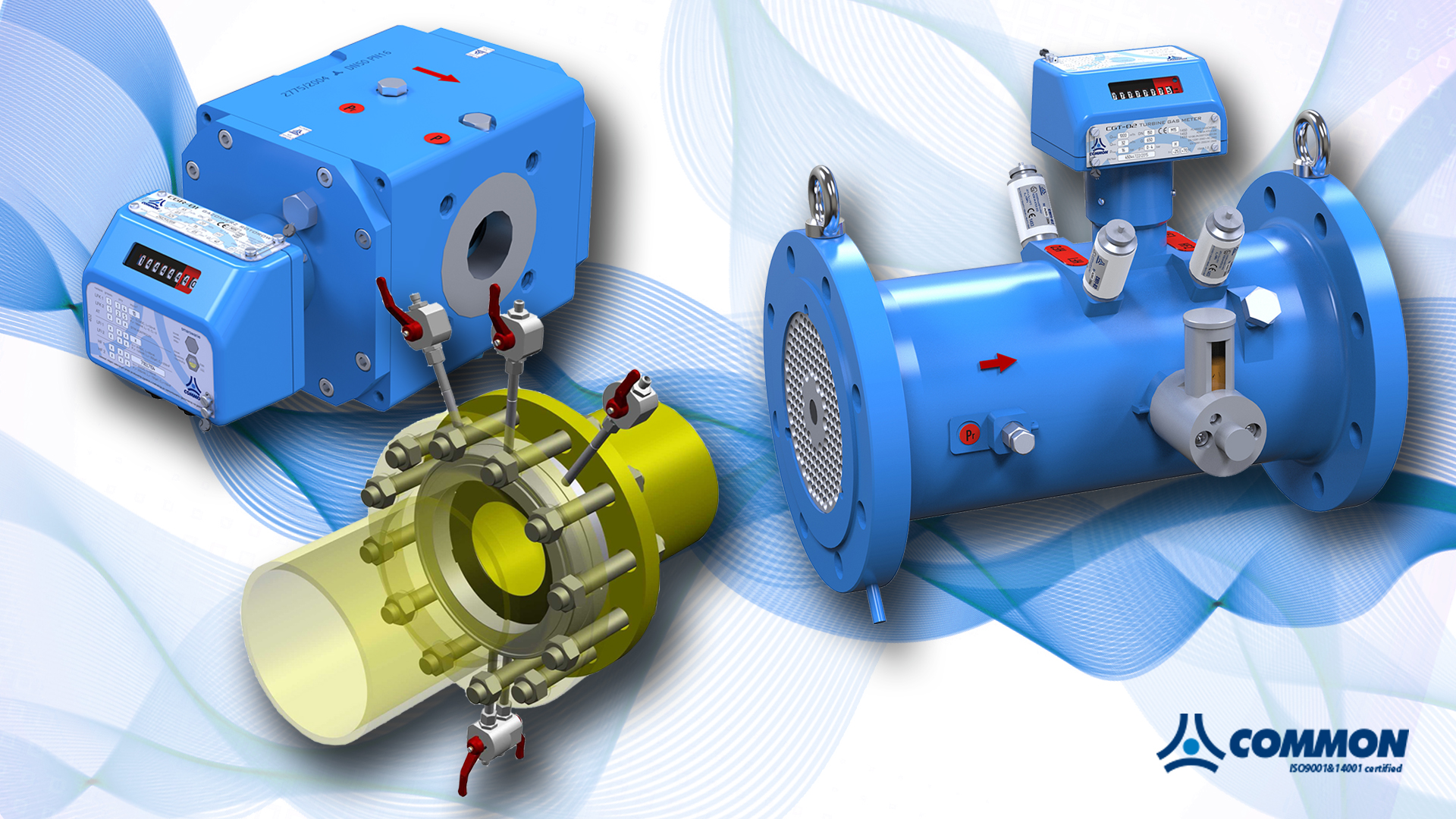Rotor for pulseless gas meter CGR-05
Common S.A is a Polish engineering company with 35 years of experience in the design and manufacture of high-quality industrial gas metering equipment and systems. The products meet all the requirements of the standards in force in the gas industry and are characterized by high measurement precision, which makes them recognized by customers all over the world. Common S.A. is one of the few companies where the products in question are created comprehensively - from the idea to the finished product. The main driving force behind the company's technical development is the research and development departments, where many innovative ideas and concepts are generated. These ideas are often transformed into innovative measuring devices through analysis, design, 3D prototyping, complex production and assembly.
Challenge
Increased customer expectations for metering equipment and stricter environmental standards led the company to take on the challenge of reducing the noise generated by volumetric metering equipment – rotary gas meters. In addition, an out-of-the-box solution was required to obtain patent protection and tap into new markets.
For the project, due to the large number of tests, it became necessary to find a new technology that would allow the low-cost manufacture of complex prototypes with a high dimensional accuracy of <0.1 mm. Traditional methods proved too costly and did not offer satisfactory results for the company. The cycloidal outer profile was extremely difficult to produce on a machine tool, and the openwork honeycomb inner structure proved impossible to achieve.
Application
With its experience and technical know-how, Common S.A developed a pulseless, low-noise rotor gas meter with high measuring performance. The solution turned out to be the creation of a pair of screwed rotors in the form of a roofed gear with a cycloidal profile, working together in a closed measuring chamber. The result is a pulseless volumetric device with elimination of axial forces on the rotor shafts – an ideal solution for comfortable operation and long service life.
However, the production of the device required very high dimensional accuracy, and its complex geometry meant that it was only possible to produce using 3D printing. The company’s analysis showed that the use of FDM technology would be ideal for this type of application. The challenge for Common S.A., however, was to select a 3D printer that would ensure dimensional accuracy of surface reproduction of less than 0.1 mm and provide the possibility of achieving parallelism of planes in the axial direction of less than 0.05 mm.
Selected design considerations for the printed components:
1.Two parts rotate without touching each other – 0.1 mm gap between parts.
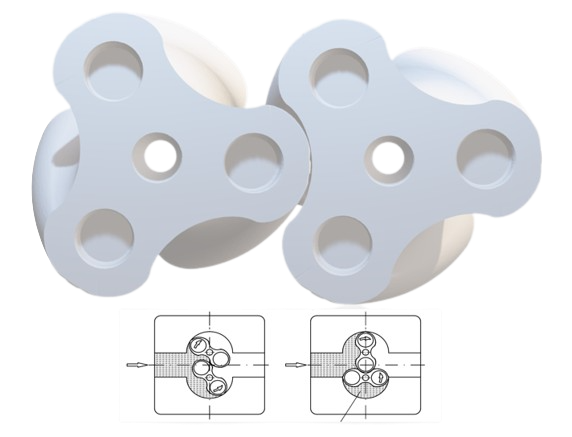
2. The parts are connected by a top and bottom casing – 0.1 mm gap between the parts and housing.
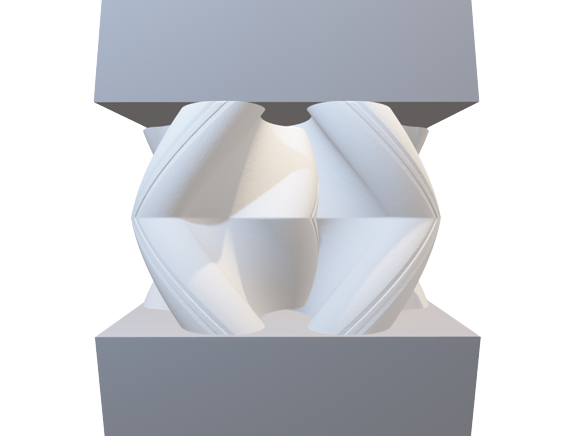
3. The top and bottom surfaces are perpendicular to the central axis.
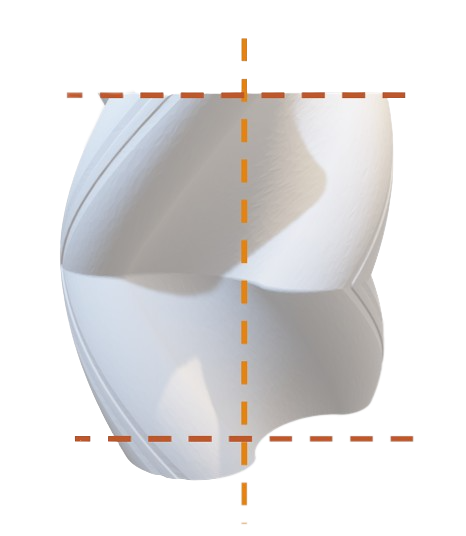
4. The entire outer surface shall not deviate from its axis by more than 0.08 mm.
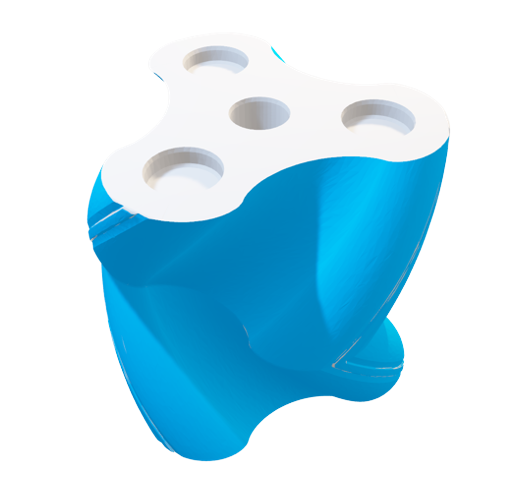
5. Holes are positioned with an accuracy of 0.05 mm.
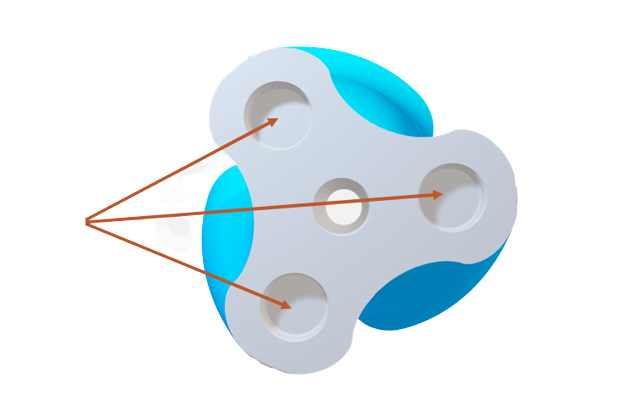
Solution
After testing a number of machines and reference prints from leading 3D printer manufacturers, it became apparent that the clever Factory 2.0 (OmniNOVA) design combined with precisely aligned axes with zero-backlash screw-nut drives could meet the challenge.
„The project was demanding not only in terms of design, but also for the printer itself. We had to develop a special test print and calibration process to ensure that the final rotor print would meet very high dimensional precision requirements. Many people understand accuracy by meeting the requirements for linear dimensions in the X, Y and Z axes. However, in an industrial environment, more is required, where dimensional deviation across the entire surface of the object is important. Key in achieving final success were Factory 2.0 printer systems such as automatic perpendicularity of the X and Y axes, automatic platform levelling and precisely manufactured axes with screw drives.” – Krzysztof Kardach, 3D Printing Technologist at Omni3D
Preparing the profile for the material used was a mere formality. Due to the specific nature of the application, the material used for the printing was PET-G ESD, which is designed for printing electronic equipment components exposed to damage as a result of electrostatic discharge. In the case of measuring devices for flammable gases, it is crucial to prevent electrostatic discharge in order to avoid the risk of explosion. ESD filaments, thanks to special additives, dissipate built-up charges and prevent the formation of discharges. In addition, the material guarantees high durability and strength thanks to its high impact strength. An optimized code enabled a single rotor to be printed in less than 4h.
 Final printout of rotors
Final printout of rotors
Effect
The result of the extensive cooperation with Omni3D, was the relatively fast and 5 times cheaper production of precision rotors from PET-G ESD. Currently, Common S.A uses several Omni3D systems on which series production is carried out.
In addition, the completion of the necessary research has allowed the company to apply for a patent application to the European Patent Office, which has resulted in ten years of patent protection for the designed devices. Common S.A is continuing its research to expand the possibilities for high-pressure gas measurement applications. The CGR-05 rotary gas meter received a medal at the 12th Gas Technology Exhibition EXPO-GAS 2023.

Prototype measurement units: left, pulsed measurement unit, right, pulseless measurement unit
non-pulsating with rotors printed on Factory 2.0 (OmniNOVA)
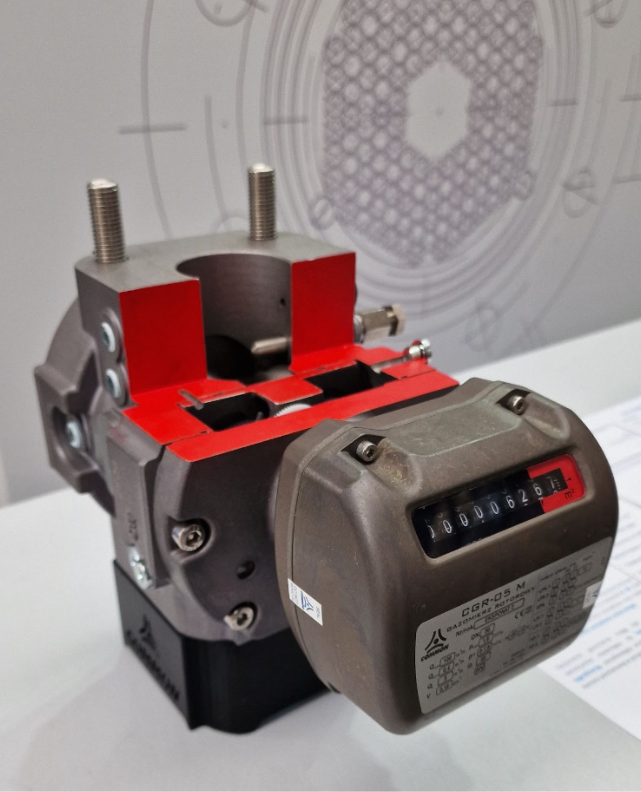
Cross-section of the CGR-05 gas meter

